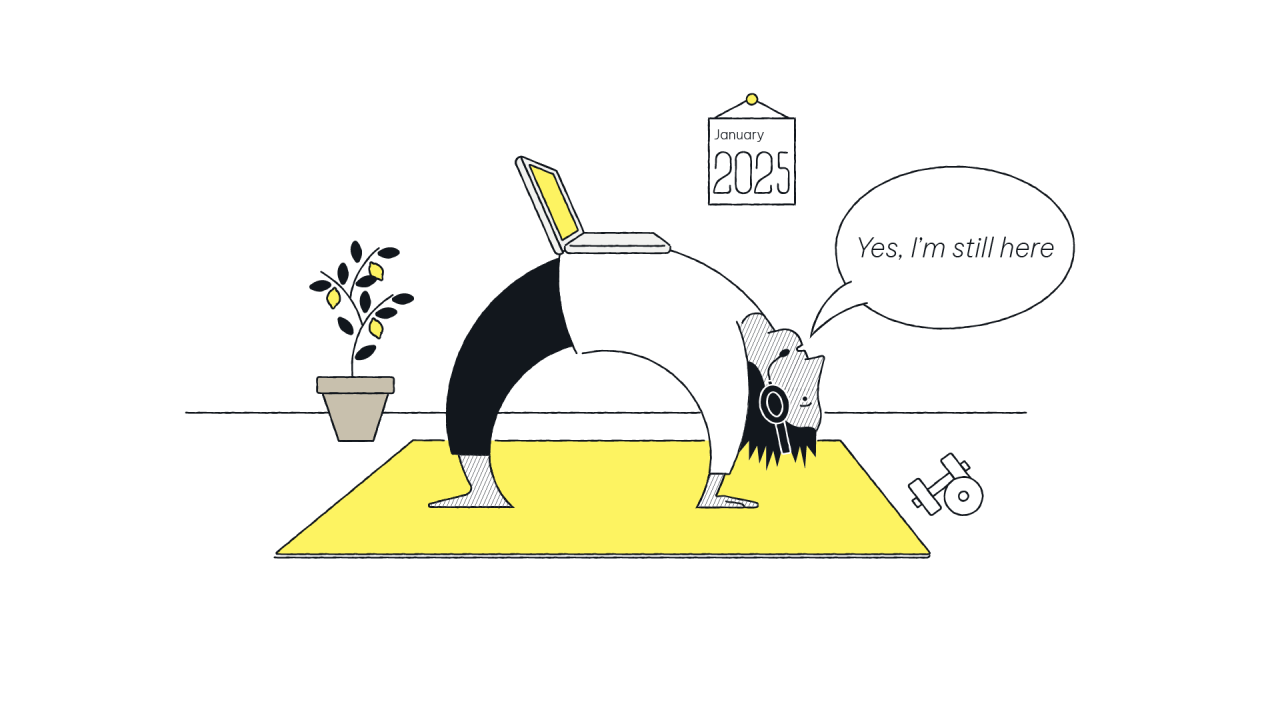New Year, New Habits? How to Build a High-Performance Culture with Behavioral Science

The New Year is a fresh start, making it a great time to embrace change. If you're one of the 30% of people setting New Year's resolutions, congratulations! Research shows that fresh starts are powerful catalysts for transformation. However, if you want those changes to last, forming new habits is essential.
To help, we've consulted Jordan Roger, Director of Behavioral Science at EZRA, to share proven strategies based on behavioral science to support a high-performance culture and high-performing teams.
Why New Year's Resolutions Fail (and How to Avoid It)
Many resolutions fail because they are framed as vague goals rather than actionable habits. Jordan explains:
“New Year's resolutions are often framed as goals, but it's important to think about the habits needed to achieve those goals.”
But what exactly are habits? Habits are automatic behaviors that require little to no conscious thought—like brushing your teeth or driving on autopilot. The key to making resolutions last is turning them into habits that foster a high-performance mindset in both individuals and teams.
The Truth About Habit Formation
A common myth is that it takes just 21 days to form a habit. This misconception originated from the 1960s self-help book Psycho-Cybernetics, which was based on how long it took plastic surgery patients to adjust to their new faces.
In reality, Jordan clarifies:
“Research shows it can take anywhere from 18 to 254 days, with an average of 66 days, depending on the complexity of the habit and individual differences.”
This process, known as automaticity, is when behaviors become second nature. So, how can you ensure you reach that point and create a high-performing individual contributor mindset?
8 Science-Backed Strategies to Build a High-Performance Culture
1. Focus Your Efforts
Trying to change too many things at once is a recipe for failure. Instead, Jordan advises:
“A single focus allows you to maximize your chances of success by directing your energy, resources, and time where it matters most.”
This approach applies to organizations as well. Leaders building a high-performance culture should focus on one key behavioral shift at a time.
2. Harness Existing Habits with Habit Stacking
Instead of relying on sheer willpower, link your new habit to an existing one. This technique, called habit stacking, helps reinforce new behaviors. Jordan suggests:
“Tagging a new habit onto an existing one or using the concept of habit stacking can be very effective.”
For example: “After I shut down my computer for work, I will take three deep breaths.” This technique fosters mindfulness and clarity—key traits of a high-performing team.
3. Connect Your Habit to Meaning
Motivation increases when a habit aligns with a meaningful goal. Jordan explains:
“Tying your habit to a meaningful purpose can provide extra motivation. Whether it's improving your health to play with your children or becoming more efficient at work to spend more time with family, having a clear ‘why’ can help you stay committed.”
A strong sense of purpose is a defining factor in high-performance teams.
4. Reward Yourself
Immediate rewards boost motivation. Jordan points out:
“Cheat days in diets are effective because they provide a sense of reward.”
Small rewards reinforce new behaviors, making them more likely to stick. Recognizing achievements also plays a crucial role in fostering high-performing individuals.
5. Track Progress with Process Goals
Instead of outcome goals (e.g., "lose 10 pounds"), focus on process goals (e.g., "exercise three times a week"). Jordan emphasizes:
“Setting process goals rather than outcome goals can keep you motivated by allowing you to track progress regularly.”
This is a common trait in high-performance cultures, where continuous improvement is celebrated.
6. Use Temptation Bundling
Pair an enjoyable activity with a new habit. This concept, known as temptation bundling, makes the process more enjoyable. Jordan explains:
“Combining the new habit with something you enjoy can help.”
Example: Only listen to your favorite podcast while working out. Leaders can apply this technique in the workplace to create an engaging, high-performing team environment.
7. Find an Accountability Partner
It’s easier to skip commitments when no one is watching. A friend, coach, or mentor can help keep you on track. Jordan notes:
“Coaching is successful largely because of the accountability it brings.”
Similarly, high-performance teams thrive in environments where accountability is embedded in the culture.
8. Replace Bad Habits with Better Ones
Quitting habits cold turkey is difficult. Instead, replace them with a healthier alternative. Jordan advises:
“Stopping a habit cold turkey is challenging because it requires fighting an automatic behavior. Replacing the habit with a less harmful one, like switching from smoking to vaping, can be more successful.”
Teams and organizations can apply this approach by replacing ineffective workflows with more efficient processes, a key strategy in how to build a high-performance culture.
Final Thoughts: Enjoy the Fruits of Your Labor
By applying these behavioral science-backed techniques, you can create lasting habits that lead to real change. Whether it takes 18 days or 254, persistence is key.
So, start small, stay consistent, and before you know it, those resolutions will become second nature—just like the habits of a high-performing team. Back-patting hands at the ready!
Frequently Asked Questions (FAQs)
1. How long does it really take to form a habit? It varies from person to person, but research suggests an average of 66 days.
2. What is the best way to remember a new habit? Habit stacking—attaching the new habit to an existing routine—helps reinforce the behavior.
3. How do habits contribute to a high-performance culture? Sustainable habits create consistency, discipline, and efficiency, all of which are critical for high-performing teams and organizations.
4. Can rewards help in habit formation? Yes, immediate rewards reinforce new behaviors and boost motivation.
5. What are the key traits of a high-performing individual contributor? Consistency, accountability, adaptability, and a focus on continuous improvement are essential traits of a high-performing individual contributor.